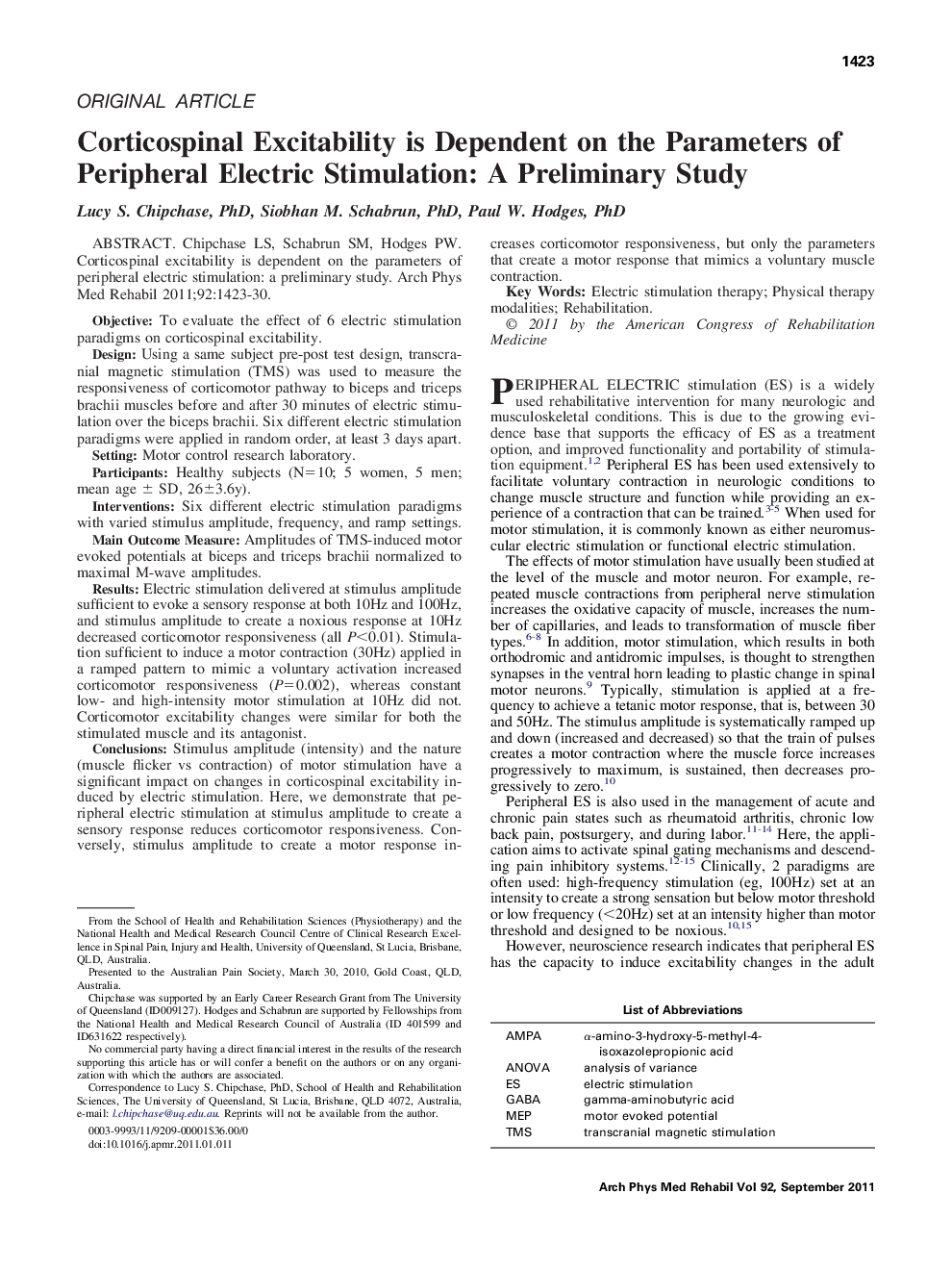| کد مقاله | کد نشریه | سال انتشار | مقاله انگلیسی | نسخه تمام متن |
|---|---|---|---|---|
| 3450557 | 1595736 | 2011 | 8 صفحه PDF | دانلود رایگان |

Chipchase LS, Schabrun SM, Hodges PW. Corticospinal excitability is dependent on the parameters of peripheral electric stimulation: a preliminary study.ObjectiveTo evaluate the effect of 6 electric stimulation paradigms on corticospinal excitability.DesignUsing a same subject pre-post test design, transcranial magnetic stimulation (TMS) was used to measure the responsiveness of corticomotor pathway to biceps and triceps brachii muscles before and after 30 minutes of electric stimulation over the biceps brachii. Six different electric stimulation paradigms were applied in random order, at least 3 days apart.SettingMotor control research laboratory.ParticipantsHealthy subjects (N=10; 5 women, 5 men; mean age ± SD, 26±3.6y).InterventionsSix different electric stimulation paradigms with varied stimulus amplitude, frequency, and ramp settings.Main Outcome MeasureAmplitudes of TMS-induced motor evoked potentials at biceps and triceps brachii normalized to maximal M-wave amplitudes.ResultsElectric stimulation delivered at stimulus amplitude sufficient to evoke a sensory response at both 10Hz and 100Hz, and stimulus amplitude to create a noxious response at 10Hz decreased corticomotor responsiveness (all P<0.01). Stimulation sufficient to induce a motor contraction (30Hz) applied in a ramped pattern to mimic a voluntary activation increased corticomotor responsiveness (P=0.002), whereas constant low- and high-intensity motor stimulation at 10Hz did not. Corticomotor excitability changes were similar for both the stimulated muscle and its antagonist.ConclusionsStimulus amplitude (intensity) and the nature (muscle flicker vs contraction) of motor stimulation have a significant impact on changes in corticospinal excitability induced by electric stimulation. Here, we demonstrate that peripheral electric stimulation at stimulus amplitude to create a sensory response reduces corticomotor responsiveness. Conversely, stimulus amplitude to create a motor response increases corticomotor responsiveness, but only the parameters that create a motor response that mimics a voluntary muscle contraction.
Journal: Archives of Physical Medicine and Rehabilitation - Volume 92, Issue 9, September 2011, Pages 1423–1430